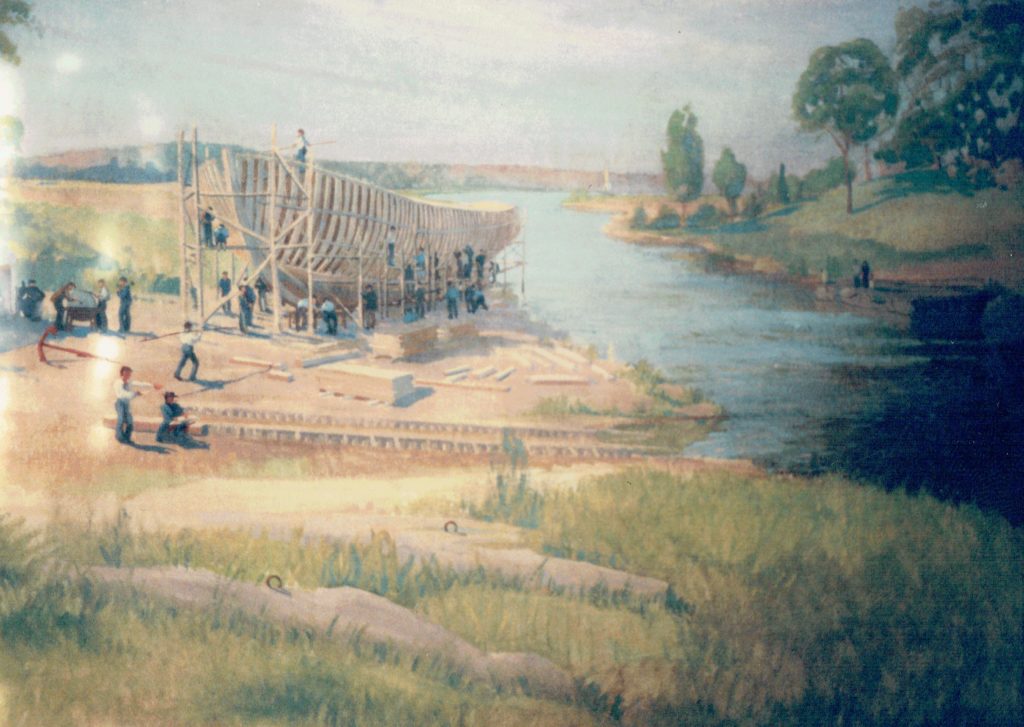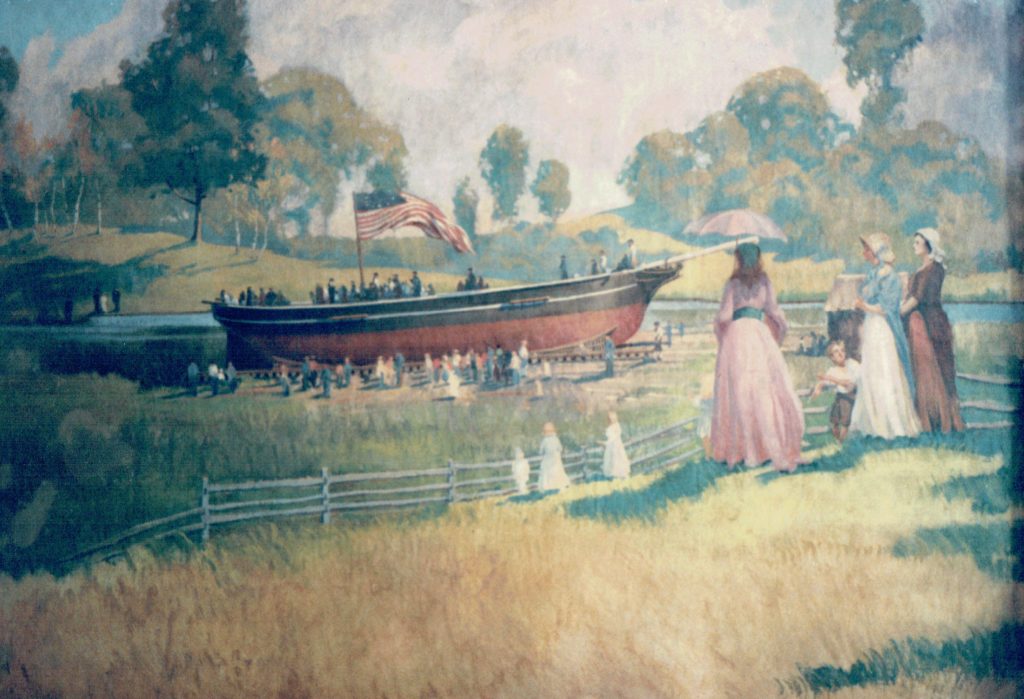In the mid-1600s the shores of the North River in what is now Hanover MA took a meandering 15 miles trip down the North River to reach the open ocean. The North River valley was then covered by old growth forests, but the forests were cleared, the land was farmed and for over two centuries the Valley supplied the facilities for a variety of industries, dominated by the building of wooden ships.
William Barstow built the first bridge across the North River in 1658 for the Plymouth/Boston road (today Washington St. crosses from Hanover to Pembroke). Barstow began building ships at this location shortly after constructing the bridge, and passed this vocation to his son William Jr. who passed the tradition on to his son and grandsons and his line of descendants continued to build ships (in Hanover and elsewhere) well into the 19th century.
Others came to build on the shores of Hanover, names that appear often in the history of the South Shore: Stetson, Eells, Magoun, Palmer, Clark, Turner, Barker, Bailey, Bates, Smith, Delano, Bass and more. At least 11 shipyards operated in Hanover along the 1/8th mile stretch of shore between the Old North River Bridge and the mouth of 3rd Herring Brook. The available timber and local iron producers supplied raw materials to build ships where this section of riverfront offered one of the few locations of solid shore on the otherwise marshy banks. Once built, these ships had to be brought down the narrow and winding North River to pass through its mouth into Massachusetts Bay. Most were brought to Scituate or Plymouth Harbor for rigging, etc. to be installed in a process called ‘fitting out’.
William Barstow’s descendant, Thomas Barstow, master carpenter, and cousin Capt. Robert Eells, blacksmith, were the first to build at Barstow’s Two Oaks. At the time, Thomas Barstow was known as one of America’s best shipbuilders. History of Shipbuilding on the North River by L. Vernon Briggs lists 22 ships built at Barstow’s Two Oaks, up to 340 tons burden (which is a measure of the cargo the ship is capable of carrying, not the weight of the vessel). Many storied vessels were built at Barstow’s Two Oaks, including the Revolutionary War era privateer the GRAND TURK.
Shipbuilding at Barstow’s Two Oaks began to slow in the early 1800s as the location of Smith’s Yard (later Barstow’s Lower Yard), a few hundred feet downriver, came into use by Barstow. This location could more easily accommodate the larger vessels that the maritime industries came to demand.


